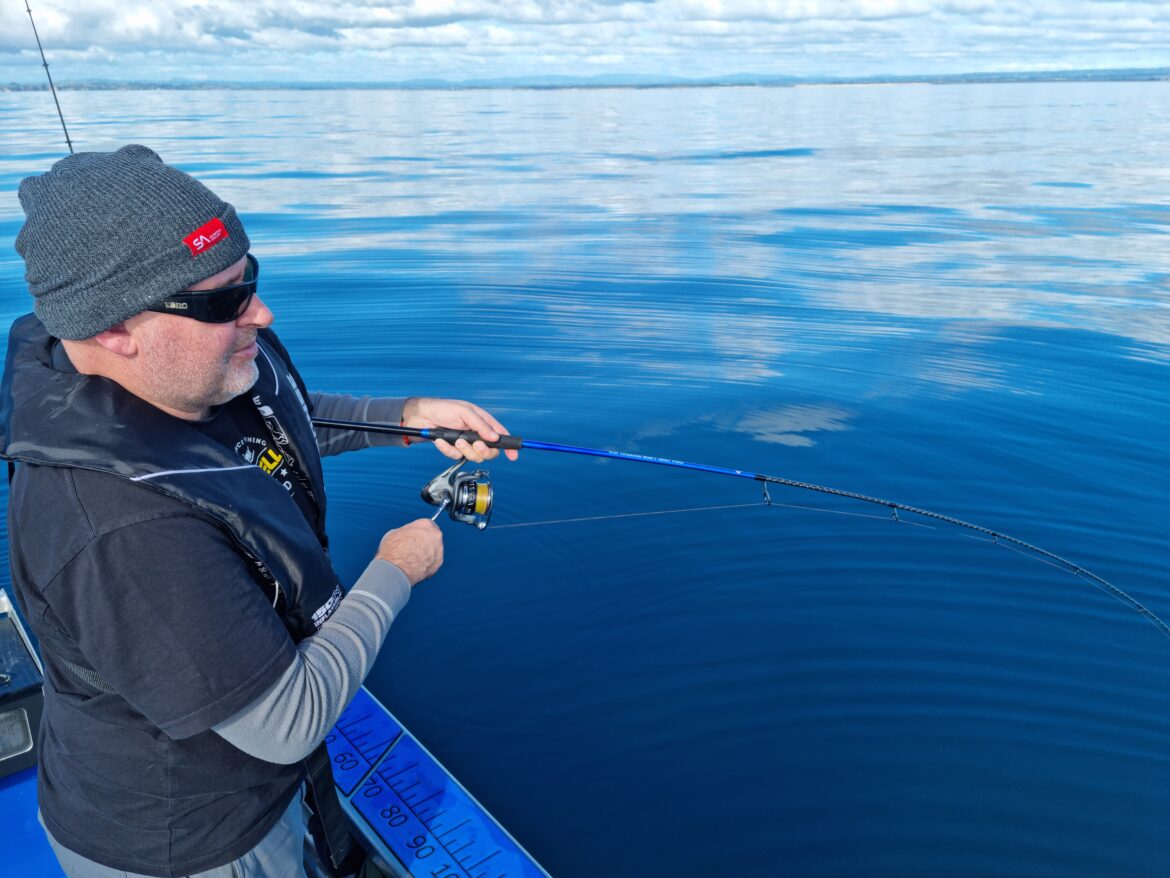The colder temperatures might deter many anglers, but top fishing awaits those who head out on the water in wintertime.
There are many anglers who put the boat and tackle away in storage over winter, as their idea of an enjoyable day on the water is with the warm sunup high in the sky and coming home with daylight savings still running over the summertime. There are, however, multiple benefits of fishing in winter and I will cover these and what some of your best fishing options are to consider in the cooler months ahead.

CLOTHING
Before heading out on the water the first thing you must sort is your clothing. Keeping warm and dry is vital to be comfortable and enjoy your time fishing. Wearing layers is of course the best way to keep warm, with thermals ideal but it all starts with an 100% waterproof jacket.
A water-resistant jacket can be treated with a waterproof coating and have a waterproof membrane but still not be fully waterproof. For a jacket to be 100% water, all the seams need to be tapered. The tapered seams are heat sealed seams that prevent water coming through the stitching. So, make sure your winter jacket employs “waterproof/breathable” technology to fully protect you from the wet conditions. Take a beanie to keep the head warm and a quality pair of fishing gloves is a good idea on those cold early starts as you hold onto the freezing boat on the way out and handle wet fish. Those numb fingers make retying lines difficult, so the gloves are welcome relief.
GOING LOCAL
In wintertime the number of boat traffic is considerably less, and this means you can often have places close to the ramp or those favourite spots to yourself. This can result in better fishing with less pressure and if you have a reef or spot nearby, fish have often settled back into these places after the busy summertime rush is over. “Fishing your feet” is a phrase that is surprisingly effective in winter.
Snapper will take up residence in such places with a bit of foul or trevally often move into harbours or on the reefs and will take softbaits cast around the shallows (under 10m). I like to softbait in harbours over winter over the high tide and drifting across sandbanks that are only 2-3m deep away from the deeper channels as the fish will usually be up on top feeding on crabs or shellfish and the fights are epic as the fish power off to reach the deeper water.
Make sure you use lighter jig heads under ½ oz and try the 4” sized softbaits if you aren’t getting any hits on the bigger 5” sizes. Going down to 15lb leader is also a good option when fishing shallow in sandy or muddy harbours to get more strikes.

DEEPER WATER
Fishing in shallower water early until the sun climbs higher to about 11am, I would then look to move out to deeper water (over 20m), to look for sign on the sounder to drop jigs/lures down. You might think of winter as rough seas with big swell and waves making for difficult fishing, but there are often more flat, calm days to enjoy than spring and summer where cyclones and equinox winds are prevalent.
If the conditions allow and you can get out on the water at short notice, I would take the chance to head out deeper to use your sounder and find good fish sign to target. Using lures in winter works just as good in summer, sliders, slow pitch jigs or softbaits on heavier jig heads such as the new Ocean Angler Head Bangers will perform well in deeper water. Find the fish sign on the bottom or baitfish and drift through these areas and work your lures until you get hits or fish. Drifting is best and move back to the start of the drift if you stop getting interest in your lures.
If the fishing is quiet, try adding some Secret Sauce to your jigs or lure skirts to help entice interest. Workups still occur in winter and with less traffic on the water, you can often have them all to yourself and the fishing underneath can be first class. Keep an eye out for working gannets, terns, or shearwaters as the birds to look for when out wide.
COOKING
Another key benefit of fishing in winter is the prime fillets you get for cooking. The fish have put on good condition in autumn after the summer spawn and with a drop in water temperatures, they need fat to help keep warmer too. When filleting you will notice the fat slicks on the blade of your knife and in the bucket of water when you dip your knife or hands in to clean while your work.
This means the pan-fried fish will be even better than the fish caught over summer, it is hands down the best time to eat snapper in my opinion due to the higher fat content. Dipping your fillets into a beaten egg, then coating with panko crumbs, and cooking in oil and a bit of butter, it doesn’t get much better!



